We spent four days in New Orleans and the Big Easy did not disappoint. Despite colder than normal temperatures, the week leading up to Mardi Gras offered smaller crowds and a more intimate experience.
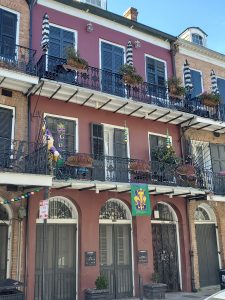 The city welcomes its tourists with open arms as tourism has become essential to their economy since Katrina. The main tourist area, which encompasses the French Quarter, the waterfront and the Garden District, was effortless to navigate. New Orleans has an excellent public transportation system that is both economical and easy to access. We were able to get everywhere we needed by tram for only $1.25 per trip or a full 24 hour pass for only $3 US. We rode the tram line round trip through the Garden District for an inexpensive tour during a rainy afternoon.
The city welcomes its tourists with open arms as tourism has become essential to their economy since Katrina. The main tourist area, which encompasses the French Quarter, the waterfront and the Garden District, was effortless to navigate. New Orleans has an excellent public transportation system that is both economical and easy to access. We were able to get everywhere we needed by tram for only $1.25 per trip or a full 24 hour pass for only $3 US. We rode the tram line round trip through the Garden District for an inexpensive tour during a rainy afternoon.
Come to New Orleans with an appetite and an adventurous spirit. We feasted on traditional Creole and Cajun cooking; everything from gator, fried oysters, jambalaya, etouffee and gumbo. We tried beignets, sticky pralines and even sweet Praline liqueur. Shrimp po’boys were by far my favourite, served with a side of cajun fries, which I consider the southern version of poutine.
To ensure a good cross section of what New Orleans had to offer we booked a walking tour of the French Quarter, a cultural tour into the older neighborhoods of the city including those affected by Hurricane Katrina, a bus tour out to a sugar cane plantation, a boat tour through the Louisiana swamps and a cruise down the Mississippi River on a paddle wheeler.
Despite being called the French Quarter, the area’s architectural style is heavily influenced by the Spanish occupation. As a result of two devastating fires in the 18th century the homes were rebuilt close to the road with interior courtyards and cooking facilities separate from the main living quarters. The three story homes featured decorative wrought or cast iron railings around the galleries (supported by poles from the ground level) and balconies around the third floor which give the French Quarter its unique look. Today the buildings offer shops and restaurants on the ground level with apartments above. Bourbon Street is the party area so venture off that to really see the area as a community.
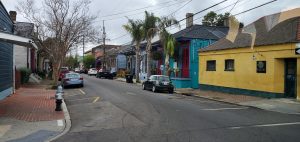
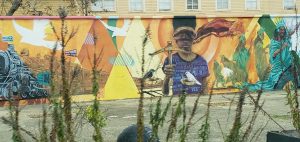
Outside of the main part of the city you will find neighbourhoods richly decorated with brightly painted homes and brilliant street art. We toured Treme and Congo Park, the oldest African American neighbourhood in New Orleans. We also crossed the bridge to tour the lower 9th ward, the area hardest hit by Hurricane Katrina. Many of the homes and stores in that area have yet to be rebuilt, even 18 years later.
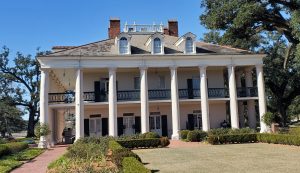
We understood historical Louisiana better after a tour of a traditional sugar cane plantation, the 184 year old Oak Alley. What few plantation homes that still exist are now museums that offer insights into the horrors of slavery, the constant struggle against the Mississippi River, and the lifestyle of the owners of these estates. The architecture in the area was a mix of traditional Creole and Greek Revival.
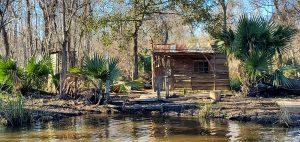
Alligators were hard to find during our swamp boat tour due to the cold weather. We were treated to sightings of wild boars and their piglets, raccoon and numerous birds. Luckily the snakes were hibernating as well. Our guide, Captain Tom, discussed the work he does in both supporting the environment and controlling the population of wildlife in the area.
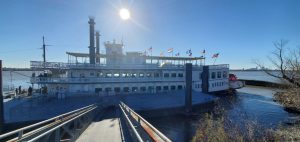
Our final tour was a paddle wheel boat cruise down the mighty Mississippi. The first part of the trip was narrated by an area historian. Halfway through we stopped to see the Chalmette Battleground where the British were defeated by the local militia during the war of 1812.
We would recommend anyone heading to the southern United States to include New Orleans in their plans. It is a city rich with history, culture, food and music. Laissez les bons temps rouler!
